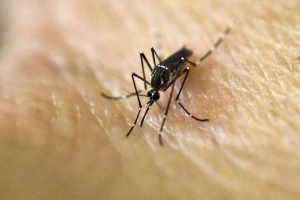The Philippines is frequently visited by typhoons throughout the year, making it essential for everyone to understand the importance of prevention and preparedness against illnesses that tend to arise during these times. Typhoons often lead to flooding, food and water contamination, food shortages, and the spread of diseases, especially in overcrowded evacuation centers. Here are the most common conditions and illnesses associated with typhoons:
-
Leptospirosis.
 Image Source: saksingayon.com
Image Source: saksingayon.com
This bacterial infection is caused by contact with water contaminated by rat urine, often present in floodwaters. It can infect individuals through open wounds or cuts.
How to prevent it: Avoid wading in floodwaters, especially if you have open wounds. If unavoidable, wear protective footwear like rubber boots.
-
Diarrhea.
 Image Source: newsnetwork.mayoclinic.org
Image Source: newsnetwork.mayoclinic.org
Food contamination due to limited food supplies can lead to diarrhea, which, if untreated, can cause severe dehydration and even death.
How to prevent it: Avoid consuming potentially contaminated food. Cook food thoroughly and reheat leftovers. Filter and boil drinking water for at least one minute to kill harmful bacteria.
-
Cough, Colds, and Flu.

Image Source: www.nbcnews.com
Viral infections like the common cold and flu are prevalent during typhoon season, especially in crowded evacuation centers where the spread of infection is heightened.
How to prevent it: Practice frequent handwashing and boost your immunity by eating nutritious food or taking vitamins.
-
Athlete’s Foot (Alipunga).

Image Source: www.flushinghospital.org
Prolonged exposure of feet to dirty floodwaters or walking barefoot in communal areas can cause fungal infections, leading to itching and foul odor.
How to prevent it: Wash feet thoroughly with soap and clean water after exposure to floodwaters. Avoid walking barefoot in public areas.
-
Malnutrition.

Image Source: asia.nikkei.com
Food shortages during typhoons may lead to reduced nutrition, resulting in significant weight loss and lack of energy.
How to prevent it: Prepare and store sufficient food supplies for at least a week before a typhoon strikes. Ensure meals remain balanced and maintain three meals a day, even during food scarcity.
-
Dengue.

Image Source: www.nation.co.ke
Stagnant water caused by flooding can become a breeding ground for mosquitoes, increasing the risk of dengue, a potentially fatal illness.
How to prevent it: Regularly clean areas where mosquitoes may breed, such as water containers. Use mosquito nets when sleeping.
-
Cholera.

Image Source: www.who.int
Cholera is a waterborne illness caused by consuming contaminated water, leading to severe diarrhea and dehydration if left untreated.
How to prevent it: Ensure drinking water is clean by filtering and boiling it for at least one minute. Always wash hands before eating or handling food.
-
Typhoid Fever.

Image Source: www.freepik.com
Similar to cholera, typhoid fever is caused by consuming contaminated water or food. Symptoms include persistent diarrhea and high fever, which can become life-threatening if ignored.
How to prevent it: Maintain clean drinking water by filtering and boiling it. Practice proper handwashing before meals.
-
Wound and Skin Infections.
Overcrowded evacuation centers and unsanitary environments increase the risk of wound infections such as tetanus, boils, scabies, and even lice infestations.
How to prevent it: Keep wounds clean and apply medication regularly until they heal. Seek medical attention for severe wounds. Maintain cleanliness in the surroundings to prevent skin infections.
-
Other Viral Diseases.
Overcrowding in evacuation centers often leads to the spread of viral illnesses like measles, sore eyes, chickenpox, and mumps.
How to prevent it: While it’s difficult to stop the spread in crowded areas, regular handwashing and completing vaccination schedules can help reduce the risk of infection.
Illnesses during typhoon season are often preventable with proper hygiene, preparation, and awareness. By staying vigilant and proactive, families can minimize the health risks associated with typhoons and ensure their safety and well-being during these challenging times.


